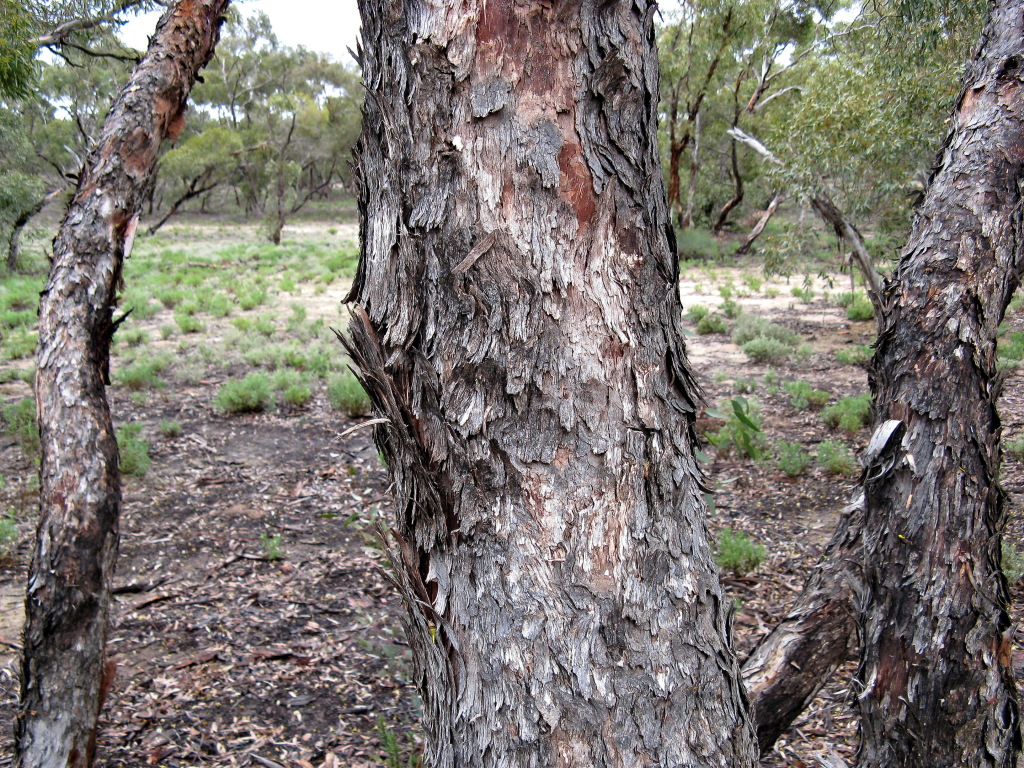Eucalyptus gracilis
F.Muell. YorrelMallee or small tree; bark rough on lower part of stems, tessellated. Juvenile leaves petiolate, opposite for few pairs then alternate, lanceolate, to 6 cm long, 1 cm wide, dull, blue-green; adult leaves petiolate, alternate, narrowly lanceolate, 5–8 cm long, 0.8–1.2 cm wide, concolorous, glossy, green; reticulation incomplete, obscured by large irregular oil glands, side veins acute, particularly at base. Inflorescences axillary, unbranched; peduncles slender, to 1 cm long, 7-flowered; buds pedicellate, clavate, to 0.6 cm long, 0.3 cm diam., scar present; operculum shallowly hemispherical; stamens ascending and flexed tangentially, then inflexed, with outer staminodes, much twisted in flower; anthers basifixed, cuboid or globoid; ovules in 4 vertical rows; flowers creamy white. Fruit pedicellate, cupular or barrel-shaped, to 0.6 cm long, 0.3 cm diam.; disc vertically descending; valves 3 or 4, below rim; seed pale red-brown, flattened-ellipsoid, smooth with longitudinal grooves, hilum ventral. Flowers Apr.–Jan.
LoM, MuM, Wim, VRiv, MSB, RobP, MuF, Gold, CVU, GGr, HSF. Also WA, SA, NSW. Occurs mostly in Big Desert and Sunset Country east to Manangatang.
Recognized in flower by the fine twisted staminodes. It may intergrade with E. calycogona which is distinguished by the 4-sided buds and fruits.
Brooker, M.I.H.; Slee, A.V. (1996). Eucalyptus. In: Walsh, N.G.; Entwisle, T.J., Flora of Victoria Vol. 3, Dicotyledons Winteraceae to Myrtaceae, pp. 946–1009. Inkata Press, Melbourne.
 Spinning
Spinning



